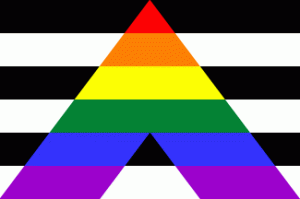On October 7th, I attended an event that
celebrated Bisexual Awareness Day held by H.O.P.E. (Helping Others Promote
Equality). For the event they got guest
speakers who openly identify or have identified in the past as bisexual. They talked about their experiences being
openly bi and the issues of how people see bisexuality. The biggest issue they talked about facing
was how people would say that bisexual people People would tell them that one day they
would figure which gender they are attracted to. This part reminded me of “La conciencia de la
mestizo: Towards a New Consciousness” by Gloria Anzaldua where she was talking
about when a biracial person is with someone that is the same as one of their
races, they have to act like that race.
It is the same with bisexuals, when they hang out with gay people they
are generally expected to be gay or if they are with a straight crowd they are
expected to be straight. Society has
difficulty understanding that there is a middle ground and they think that you
have to be one or the other.
are just confused.
They also talked about the issue when it comes to current
partners. If a male was previously
dating a female but then after breaking up, started dating a male people would
start asking, “Oh so you’re gay now”. Or if it were the other way around people
would say, “So, are you straight now?”
It is as if bisexual people jump between gay and straight depending on whom
they are currently with but that is far from the truth. Then there was also the issue where people
say that bisexuals are “just greedy” because they want both men and women. It’s not that they are greedy, no one can
control whom they find attractive and just because straight people are only
attracted to half the population doesn’t mean the bisexual people are greedy
for liking more.
The female speakers also talked about how difficult it is to
be a bisexual female in our society. Just
like in “Compulsory Heterosexuality and Lesbian Existence” by Adrienne Rich,
they talked about how society always automatically assumes that women should
naturally be straight. So if it is so
difficult for men to understand that a woman can be a lesbian, how can they
understand her being bisexual? They also
talked about how the only way many men can accept a bisexual woman is through
fetishizing and porn.
It was a very interesting event and it was nice to hear the
stories of how different people have dealt with being openly bisexual.
Here is a video that talks a bit more about bisexuality and the issues that bisexual people face in day to day life.





